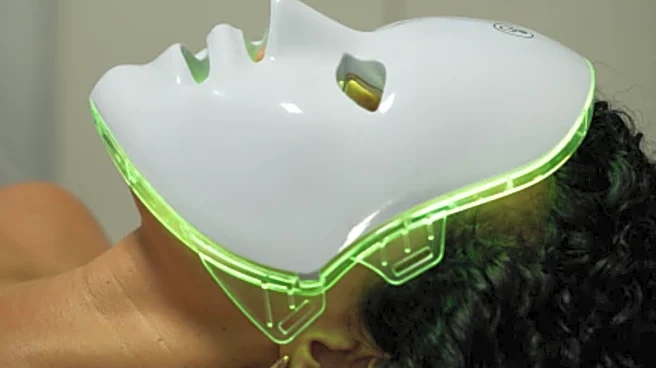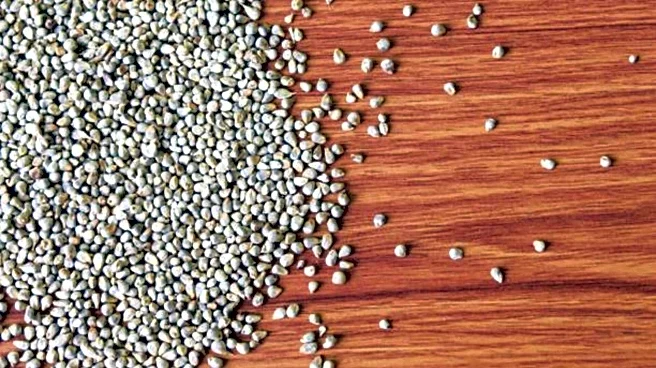The United Kingdom has banned several LED face mask advertisements for making unauthorised claims about treating acne and rosacea. The move highlights a growing trend, the rise of at-home beauty devices that promise professional-grade skincare results.
For years, the dream of glowing, youthful, spotless skin has fueled the beauty market. Now, flashy gadgets like LED face masks are the latest obsession, claiming to deliver salon-like results at home. But how do these masks with colourful lights actually work? Do they really deliver what they promise? And are at-home versions as effective as clinical treatments?
To find out, we spoke to Dr Chandani Jain Gupta, MBBS, MD – Dermatologist & Aesthetic Physician at Elantis Healthcare, New Delhi, to understand
the science and truth behind LED face masks. Below is the conversation with Dr Gupta, in which she answers key questions about the science, safety, and effectiveness of LED face masks.
How exactly do LED face masks work on the skin?
LED masks deliver specific light wavelengths that will penetrate the skin and trigger the body’s natural healing and regenerative processes.
The technical name for this process is photobiomodulation, and this process gives results for issues like acne, fine lines, and redness by stimulating the body’s production of collagen, reducing inflammation, and increasing the activity of the cells, all without harming the skin or using harmful UV rays.
What’s your take on the LED mask trend on social media, science-backed or more of a marketing hype?
LED therapy has scientific backing, especially red and blue light treatments. Nevertheless, social media can tend to exaggerate results.
LED therapy has the potential to enhance the health of your skin; however, the visual results will take time, and there will be a difference in what patients can expect based on the quality of the device that they are using and the consistency of use.
LED therapy can be advantageous, but it is not the instant miracle cure that social media would have one think.
In your clinical experience, how often do you recommend LED therapy to patients?
In a clinical setting, it is a common recommendation to have the LED therapy two to three nights a week in the beginning phase of treatment; as you start to see some progress, the number of visits may go to once a week and then monthly for the maintenance phase.
The frequency of visits is determined by the skin issue, the strength of the device, and the person’s response to therapy.
Have you seen consistent results with at-home devices among your patients?
At home, LED masks can visibly improve mild acne, early fine lines, or redness; however, this is a modest change. Since consumer devices are less potent than medical-grade devices, consumer devices take longer to provide visible results, usually six to twelve weeks of consistent use, and regular maintenance visits are also needed.
Can LED therapy actually boost collagen or reduce acne, as many brands claim?
Yes, red and near infrared light stimulate collagen and elastin production, making the skin firmer and reducing wrinkles. Blue light reduces acne-causing bacteria, lowers oil production, and calms inflammation. Together, LED therapy helps to heal skin and reduce breakouts, effectively treating both the effects of ageing skin and active acne.
Are at-home LED masks comparable in effectiveness to in-clinic professional treatments?
No, at-home masks are not as effective as clinical treatments. Clinical use devices deliver significantly more light intensity, allowing them to penetrate the skin more effectively and with a quicker time to results.
Home-use masks are more appropriate for gentleness and safety; however, you will require more frequent usage and be forced to wear masks longer to allow for a visible improvement in skin texture or acne control.
Are there any results users can realistically expect, and how soon?
Red light therapy shows results in up to 8–12 weeks of consistent use with smoother, firmer skin and reduced fine lines. Blue light therapy can help with acne, oil reduction, and reducing inflammation in about 4–8 weeks.
The results depend on the skin type and strength of the device, but will be gradual and cumulative over time.
What are the most common misconceptions people have about LED face masks?
Some myths are that LED masks can give you instant results, will work the same on every skin type, or will replace a professional treatment, thinking that stronger, better results. Others have myths that redness/tan/burn is from the light, which is not always the case.
Results take place with consistent use and with the correct wavelength, not necessarily the intensity of the light.
Are there any skin conditions or medical situations where LED therapy should be avoided?
Yes. Individuals with photosensitive skin conditions, those who take medications that are light sensitive, active skin infections or open wounds, or melasma should not use LED therapy.
It is also best to avoid LED therapy during pregnancy, if you have epilepsy, a pacemaker, or an eye disease, unless approved by your doctor.
Can these devices replace regular skincare routines or clinical treatments?
No, LED masks are not a substitute for a skincare regimen or professional treatment; they are considered a complementary device at home.
LED masks can help enhance the results achieved when using topical products or dermatological care. LED masks cannot achieve what peels, lasers, or microneedling can achieve, but they help support and maintain incredibly healthy, glowing skin.




/images/ppid_59c68470-image-176277503374724521.webp)


/images/ppid_59c68470-image-17628625452727028.webp)









